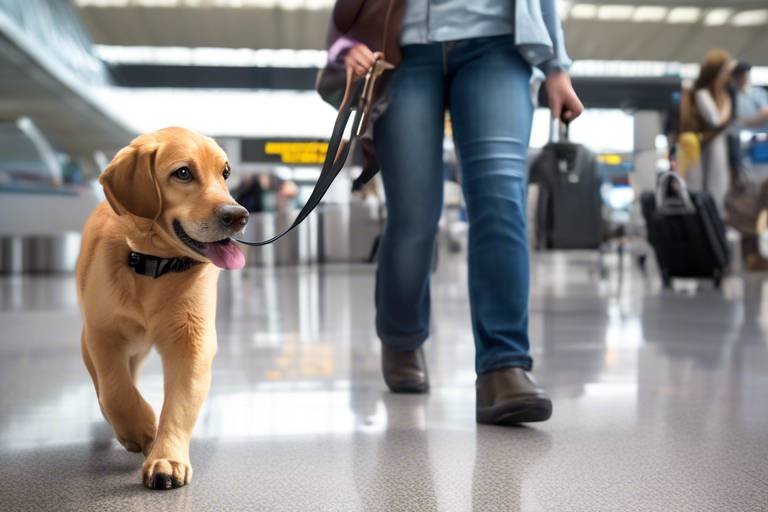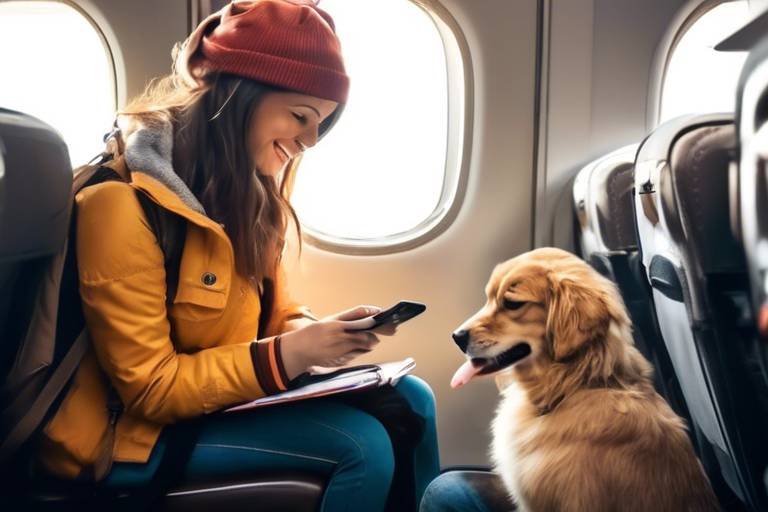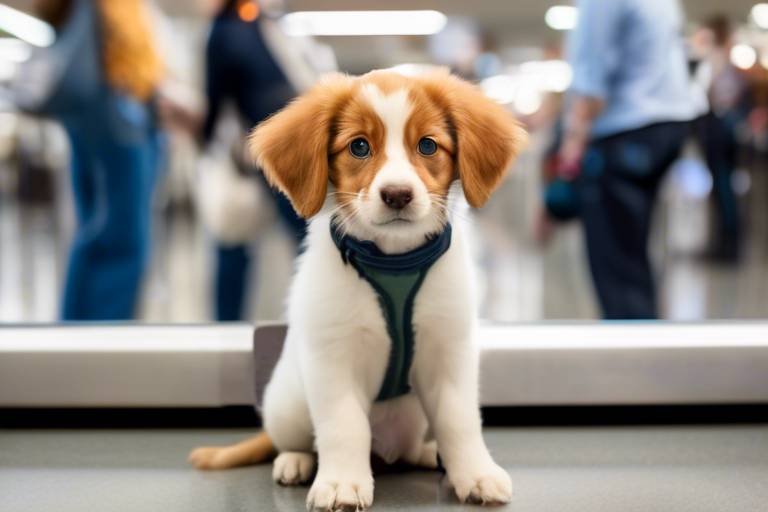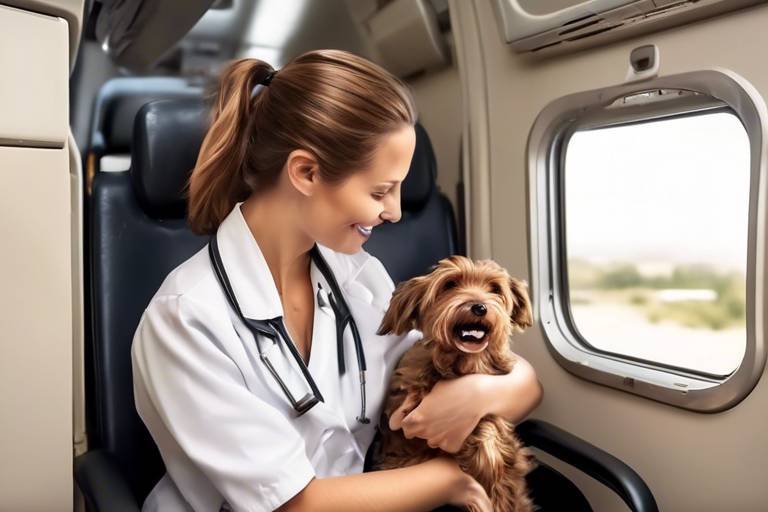The Importance of Microchipping Before Travel
When it comes to traveling with our beloved pets, the excitement can often be overshadowed by concerns for their safety. Have you ever thought about what might happen if your furry friend gets lost in an unfamiliar place? This is where microchipping steps in as a game-changer. Microchipping is not just a trend; it’s a crucial step in ensuring the safety and well-being of your pet during travel. Imagine your pet wandering off in a new city, with no way for someone to identify them or contact you. A microchip provides a reliable solution to this heart-wrenching scenario.
Microchips are tiny, about the size of a grain of rice, and are implanted just under your pet's skin. They contain a unique identification number that is linked to your contact information in a database. This means that if your pet gets lost, a simple scan can reunite you with your furry companion. The peace of mind that comes from knowing your pet can be identified and returned to you if lost is invaluable. It’s like having an insurance policy for your pet’s safety.
Moreover, many countries require pets to be microchipped before they can enter or leave. This is not just a bureaucratic hurdle; it’s a matter of ensuring that lost pets can be returned to their owners quickly and efficiently. Without a microchip, your chances of recovering a lost pet diminish significantly. So, whether you’re planning a weekend getaway or an extended vacation, microchipping should be at the top of your travel checklist.
In addition to safety, microchipping offers a sense of security for pet owners. Knowing that your pet has a permanent form of identification can alleviate anxiety, allowing you to focus on enjoying your trip rather than worrying about what might happen if your pet goes missing. Think of it as a safety net that catches you and your pet when life takes an unexpected turn.
As we delve deeper into the importance of microchipping, we’ll explore the legal requirements for travel, the myriad benefits it offers, and how to ensure your pet is properly microchipped. So, buckle up, pet owners! It’s time to embark on this journey of understanding why microchipping is not just a good idea—it’s essential.
- What is microchipping? Microchipping is the process of implanting a small chip under your pet's skin that contains a unique identification number.
- Is microchipping safe for my pet? Yes, microchipping is a safe and quick procedure that can be done by a veterinarian.
- How do I register my pet's microchip? After implantation, you need to register your contact information with the microchip company to ensure you can be reached if your pet is found.
- What if I move or change my phone number? It’s crucial to update your contact information in the microchip database whenever you move or change your phone number.
- Can microchips be tracked? No, microchips do not have GPS capabilities; they only store identification information that can be accessed via a scanner.

Understanding Microchipping
This article discusses the critical role of microchipping pets prior to travel, highlighting safety, identification, and peace of mind for pet owners. It explores various aspects of microchipping and its benefits for both pets and their owners.
Microchipping is a simple and effective way to ensure your pet's safety. Imagine this: you're on vacation, enjoying the sun, and your furry friend decides to explore the great unknown. Without a microchip, the chances of finding them diminish drastically. A microchip acts as a tiny beacon of hope, providing a permanent form of identification that can be scanned by shelters or veterinary clinics if your pet goes missing.
So, how does this tiny device work? A microchip is a small, rice-sized implant that contains a unique identification number. This number is linked to a database that holds your pet's information, including your contact details. When a lost pet is found, a simple scan with a specialized device reveals the microchip number, and voilà—you're one step closer to reuniting with your beloved companion!
The implantation process is quick and relatively painless. It’s similar to a routine vaccination, where a veterinarian injects the microchip under your pet’s skin, usually between the shoulder blades. The entire procedure takes just a few minutes, making it an easy addition to your pet's healthcare routine. Plus, there’s no need for anesthesia, so your pet can go back to their playful self in no time.
To give you a clearer picture, here’s a quick comparison of microchipping versus traditional identification methods:
| Identification Method | Pros | Cons |
|---|---|---|
| Collars and Tags |
|
|
| Microchipping |
|
|
In summary, microchipping is not just a trend; it's a crucial safety measure that can save lives. With the simple act of microchipping, you are giving your pet a voice, ensuring they can always find their way back home. As a responsible pet owner, understanding and implementing this small but mighty tool is one of the best decisions you can make for your furry friend.
Q: Is microchipping painful for my pet?
A: The implantation process is quick and similar to a vaccination, causing minimal discomfort.
Q: How often do I need to update my microchip information?
A: It's essential to update your information whenever you move or change your phone number to ensure you can be contacted if your pet is found.
Q: Can microchips be removed?
A: Microchips are designed to be permanent and cannot be removed without surgery.
Q: What if my pet is lost and not found by a vet?
A: Many shelters and rescue organizations have scanners, so it's still possible for your pet to be identified even if they're not taken to a vet.

Legal Requirements for Travel
When it comes to traveling with your furry friend, understanding the legal requirements is crucial. Different countries have varying regulations regarding pet travel, and failing to comply can lead to serious complications, including denied entry or quarantine. Before you pack your bags, take a moment to familiarize yourself with the specific requirements of your destination. For instance, many countries mandate that pets be microchipped as a form of identification. This is not just a recommendation; it's often a legal requirement.
In addition to microchipping, other regulations may include proof of vaccinations, health certificates, and sometimes even specific breeds being restricted. It's essential to check the official government websites or consult with your veterinarian for the most up-to-date information. To give you a clearer picture, here’s a quick overview of common requirements:
| Country | Microchip Required | Health Certificate | Vaccinations |
|---|---|---|---|
| United States | Recommended | Yes | Rabies |
| United Kingdom | Yes | Yes | Rabies, Tapeworm Treatment |
| Australia | Yes | Yes | Rabies, Other Vaccinations |
| Canada | Recommended | Yes | Rabies |
As you can see, microchipping is a common requirement across many countries. It not only serves as a reliable form of identification but also plays a significant role in ensuring your pet's safety and compliance with international travel laws. Additionally, some airlines have their own specific rules regarding pet travel, so be sure to check with them as well.
Moreover, it's vital to keep your pet's microchip information updated. If you've moved or changed your phone number, make sure to contact the microchip registry to update your details. This can make a world of difference if your pet gets lost during your travels. Remember, being well-informed and prepared can save you a lot of stress and heartache down the line.
So, before you embark on your journey, take the time to gather all necessary documentation. This not only ensures a smooth travel experience but also provides peace of mind knowing that you’ve done everything possible to keep your pet safe and compliant with the law.
- Do all countries require pets to be microchipped?
Not all countries have the same regulations, but many do require microchipping as part of the travel process. - What should I do if my pet's microchip information is outdated?
Contact the microchip registry immediately to update your information to ensure successful identification. - Can I travel with my pet if they are not microchipped?
In some cases, it might be possible, but it is highly discouraged and could lead to complications.

Benefits of Microchipping
When it comes to ensuring the safety and well-being of your furry companions, microchipping stands out as a game-changer. Imagine the peace of mind knowing that your pet has a tiny, permanent form of identification embedded just beneath their skin. This small chip can make a monumental difference in the event of your pet going missing. But what are the specific benefits of microchipping? Let's dive into some of the most compelling reasons why every pet owner should consider this essential safety measure.
First and foremost, one of the most significant advantages of microchipping is the increased chances of pet recovery. According to the American Kennel Club, nearly 1 in 3 pets will get lost at some point in their lives. Without proper identification, many of these pets may never find their way back home. However, a microchip can significantly enhance the odds of a reunion. When a lost pet is found, animal shelters and veterinary clinics have the technology to scan for a microchip, and if one is detected, they can quickly access the owner's contact information. This swift action can turn a heart-wrenching situation into a joyful reunion.
Moreover, microchipping reduces stress for pet owners. Think about the panic that sets in when your beloved pet goes missing. The fear of never seeing them again can be overwhelming. However, knowing that your pet is microchipped allows you to focus on the search rather than worrying about how to identify them if they are found. This peace of mind is invaluable, especially during stressful situations.
Another noteworthy benefit is the potential for reunification. Microchips have been instrumental in reuniting pets with their families. There are countless heartwarming stories of pets who have traveled miles away from home, only to be scanned and returned to their loving owners. For instance, a lost dog found hundreds of miles away was able to return home thanks to a microchip. These stories are not just rare occurrences; they are a testament to the effectiveness of microchipping.
Additionally, microchipping is a relatively simple and affordable procedure. The process involves a quick injection, similar to a vaccine, and can be done during a routine vet visit. The chip itself is small, about the size of a grain of rice, and is designed to last a lifetime. The cost of microchipping is often less than that of other pet safety measures, making it an accessible option for pet owners.
Lastly, microchipping can be a crucial aspect of travel safety. If you plan to travel internationally with your pet, many countries require microchipping as part of their pet import regulations. This means that having your pet microchipped not only helps in everyday scenarios but also ensures compliance with legal requirements when traveling abroad. It’s a win-win situation!
In conclusion, the benefits of microchipping your pet are numerous and significant. From increasing the chances of recovery to providing peace of mind, this small step can make a big difference in the lives of both pets and their owners. If you haven’t already, consider microchipping your furry friend today – it’s a simple, affordable, and effective way to safeguard their future.
- Is microchipping painful for my pet? - The microchipping process is similar to getting a vaccination and is generally quick and causes minimal discomfort.
- How long does a microchip last? - Microchips are designed to last a lifetime, and they do not require any maintenance.
- Can I update my contact information? - Yes, it’s crucial to keep your contact details updated in the microchip registry to ensure you can be contacted if your pet is found.
- What if my pet is lost and found without a microchip? - Without a microchip, it may be challenging to prove ownership, and the chances of recovery significantly decrease.

How to Microchip Your Pet
Getting your pet microchipped is a straightforward yet crucial process that can significantly enhance their safety and your peace of mind. Imagine the relief of knowing that if your furry friend ever gets lost, there’s a reliable way to bring them back home. So, how do you go about microchipping your pet? Let’s break it down step by step.
First things first, you’ll want to choose a qualified veterinarian or a reputable animal clinic that offers microchipping services. Many local shelters and rescue organizations also provide this service, often at a reduced cost. It’s essential to ensure that the facility you choose has experience with microchipping and follows proper protocols to ensure the procedure is safe and effective.
Once you’ve selected a location, the next step is to schedule an appointment. On the day of the appointment, make sure to bring your pet in a comfortable carrier or on a leash. The procedure itself is quick and generally takes less than a few minutes. Your veterinarian will use a special syringe to implant a tiny microchip, roughly the size of a grain of rice, just under your pet’s skin, usually between the shoulder blades. It’s a simple and minimally invasive process.
After the microchip is implanted, your veterinarian will scan the area to ensure the chip is functioning correctly. This is a good time to ask any questions you may have about the procedure or what to expect afterward. Remember, the microchip doesn’t have a battery; it’s powered by a scanner that activates the chip when it’s passed over it, sending out a unique identification number.
Once your pet is microchipped, the next critical step is to register the microchip with a pet recovery database. This is where the magic happens! It’s not enough to just have the chip; you need to ensure that your contact information is linked to it. Most clinics will help you with this process, but it’s ultimately your responsibility to keep your details up to date. If you move or change your phone number, make sure to update your information in the registry. Failure to do so could mean that even with a microchip, you may not be reunited with your pet if they go missing.
Lastly, while the thought of microchipping might sound a bit daunting, it’s important to note that the procedure is generally painless and safe. Many pets don’t even notice it’s been done! If you’re still feeling apprehensive, consider discussing your concerns with your vet. They can provide you with the reassurance you need and help you understand why microchipping is a responsible choice for any pet owner.
In summary, microchipping your pet is a simple, quick, and effective way to ensure their safety. By choosing a qualified professional, ensuring proper registration, and keeping your contact information updated, you can significantly increase the chances of a joyful reunion should your pet ever get lost. After all, isn’t that what every pet owner hopes for?
- Is microchipping painful for my pet? No, the procedure is quick and similar to a routine vaccination.
- How long does it take to microchip a pet? The actual microchipping process takes just a few minutes.
- Will my pet need anesthesia for microchipping? No, anesthesia is not required; the procedure is performed while your pet is awake.
- What if I move? Do I need to get a new microchip? No, you just need to update your contact information in the microchip registry.
- Can microchips be tracked? No, microchips do not have GPS tracking capabilities; they only store identification information.

Choosing the Right Microchip
When it comes to microchipping your pet, not all microchips are created equal. Choosing the right microchip can make a significant difference in the effectiveness of identification and recovery. So, what should you look for when selecting a microchip for your furry friend? First, you need to consider the frequency at which the chip operates. Most microchips work at either 125 kHz or 134.2 kHz. The latter is the international standard, making it a better choice if you plan to travel abroad with your pet.
Next, think about the size and design of the microchip. While most chips are small enough to be implanted easily, some come with additional features like anti-migration technology, which helps to keep the chip in place after implantation. This is crucial for ensuring that the chip stays where it should be, allowing for easy scanning in case your pet gets lost.
Another important factor is the biocompatibility of the microchip. You want to ensure that the chip is made from materials that are safe and will not cause adverse reactions in your pet. Look for microchips that are made from high-quality, tested materials to minimize the risk of complications.
Additionally, consider the registration process. Some microchip manufacturers offer free lifetime registration, while others may charge a fee. It's essential to choose a microchip that provides a straightforward registration process and ensures that your pet's information is easily accessible to reunite you with your pet if they get lost.
Lastly, consult your veterinarian about the best microchip options for your pet. They can provide valuable insights based on your pet's size, breed, and lifestyle. Remember, the goal is to ensure that your pet can be identified and returned to you quickly and safely.
In summary, when choosing the right microchip, keep these factors in mind:
- Frequency (125 kHz vs. 134.2 kHz)
- Size and design
- Biocompatibility
- Registration process
- Veterinarian recommendations
By taking the time to choose the right microchip, you’re not just investing in a tiny piece of technology; you’re investing in peace of mind. A good microchip can be the difference between a lost pet and a happy reunion. So, do your research, ask questions, and make an informed decision that will keep your furry friend safe.
1. How much does it cost to microchip a pet?
The cost of microchipping can vary widely, typically ranging from $25 to $60, depending on the veterinary clinic or animal shelter.
2. Is microchipping painful for pets?
The microchipping process is quick and usually involves a simple injection, similar to a vaccination. Most pets experience minimal discomfort.
3. How long does a microchip last?
Microchips are designed to last a lifetime. However, it's important to keep your contact information up to date in the registration database.
4. Can microchips be removed?
While it is technically possible to remove a microchip, it is not recommended. The procedure requires surgery and can pose risks to your pet's health.
5. What if my pet’s microchip is not registered?
If your pet’s microchip is not registered, it may not be effective in reuniting you with your pet. Always ensure that you register your pet’s microchip information with the manufacturer.

Microchip Registration
Microchip registration is a crucial step in ensuring that your pet can be identified and returned to you if they ever get lost. Imagine this: your furry friend wanders off during a hike or escapes from your yard. Without proper registration, the microchip that was implanted in them becomes nearly useless. It's like having a phone without a SIM card—great technology, but it won't serve its purpose without the right setup.
When microchipping your pet, the process doesn't end with the implantation of the chip. You must register the microchip information with a reliable database. This information typically includes your contact details, your pet's description, and the unique identification number of the microchip itself. If your pet is found, animal shelters and veterinarians can scan the chip and access your information, facilitating a swift reunion.
It's essential to keep your details up to date. If you move or change your phone number, make sure to update your pet's microchip registration. Failing to do so could mean that when someone finds your pet, they won’t be able to reach you. In fact, studies show that over 30% of pets that are microchipped are never returned to their owners due to outdated information. This statistic highlights the importance of maintaining accurate records.
Here’s a quick overview of the registration process:
- Contact the microchip company or veterinary clinic that implanted the chip.
- Provide your pet's details and your contact information.
- Confirm that the information is correctly entered into the database.
- Keep a record of the microchip number and registration details for your reference.
Additionally, many microchip companies offer online registration services, making it easier than ever to manage your pet's information. Just a few clicks can ensure that your pet's microchip is registered and that you can be contacted if they are found.
In conclusion, microchip registration is not just a formality; it's a vital component of responsible pet ownership. By taking the time to register your pet's microchip and keeping your information current, you significantly increase the chances of a happy reunion if your pet ever goes missing. Remember, your pet relies on you for their safety, and this is one of the simplest yet most effective ways to protect them.
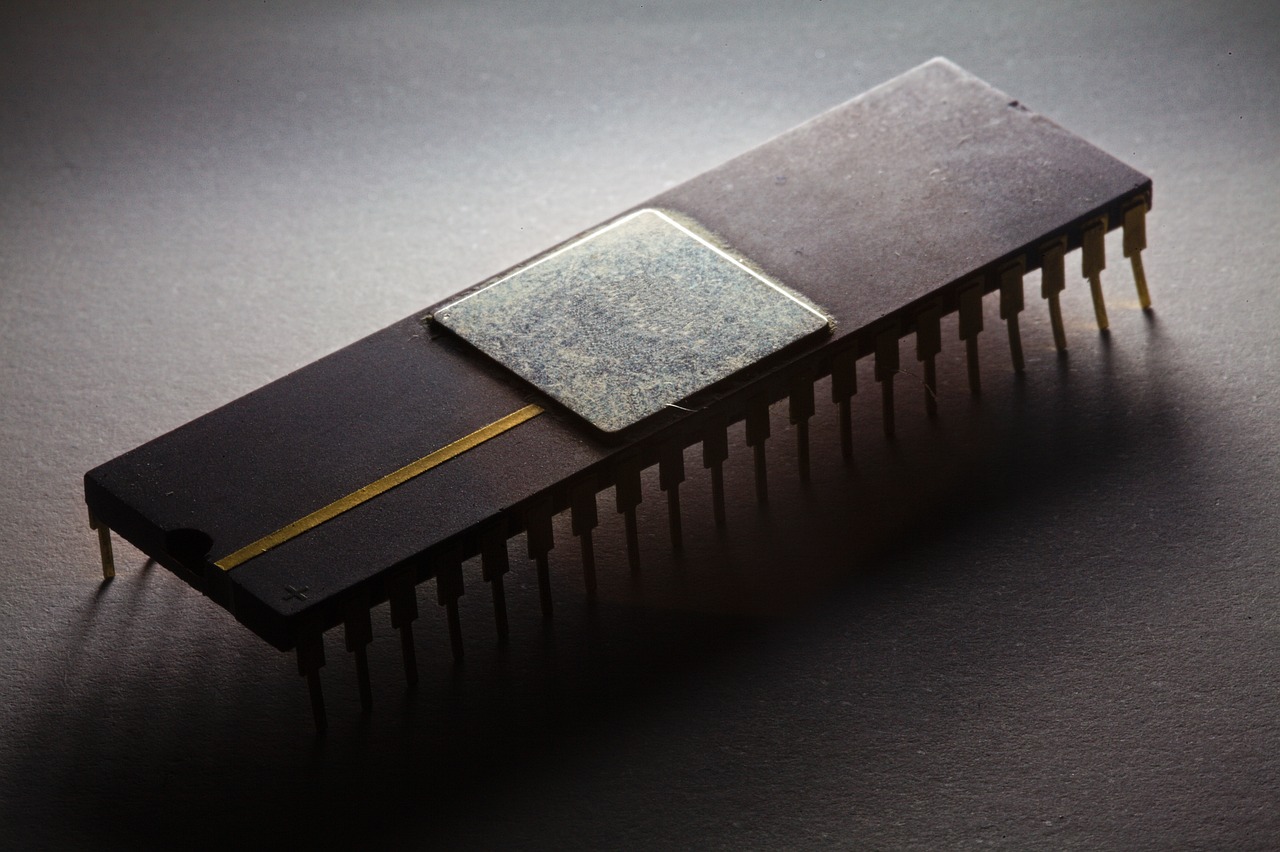
Common Misconceptions
When it comes to microchipping pets, there are several misconceptions that can cloud the judgment of well-meaning pet owners. One of the most prevalent myths is that microchips are a form of GPS tracking. In reality, microchips are not designed to track your pet's location in real-time. Instead, they serve as a permanent form of identification that can be scanned by a veterinarian or animal shelter to retrieve your pet's information. Imagine having a library card that only tells you which book you own but doesn’t tell you where it is at any given moment!
Another common concern is that microchipping is a painful process for pets. Many owners fear that the implantation of a microchip will cause their furry friends discomfort. However, the truth is that the procedure is quick and similar to receiving a vaccination. Most pets experience only a momentary pinch, and the long-term benefits far outweigh this brief discomfort. Just like a quick shot can save you from a nasty illness, a microchip can save your pet's life in the event they get lost.
Some pet owners also worry about the safety of microchips, fearing that they might cause health issues. It’s important to note that microchips are made from biocompatible materials and are designed to be safe for long-term implantation. In fact, the risks associated with microchipping are extremely low, and serious complications are rare. The benefits of having your pet microchipped, such as a higher chance of being reunited if lost, significantly outweigh these minimal risks.
Additionally, many people believe that once a pet is microchipped, they don’t need to worry about it anymore. This is a dangerous misconception! It’s crucial to register your pet's microchip with your contact information and keep it updated. If you move or change phone numbers, failing to update the microchip registry can lead to heartache if your pet goes missing. Think of it like having a phone number—if you change it and don’t inform your contacts, they won’t be able to reach you.
Lastly, some owners think that microchipping is only necessary for certain types of pets, like dogs or cats. However, any pet that can wander off or be lost can benefit from microchipping. This includes rabbits, ferrets, and even birds! Regardless of your pet's species, microchipping is a responsible choice that can provide peace of mind.
In summary, understanding these common misconceptions can help pet owners make informed decisions about microchipping. By separating fact from fiction, you can ensure that your beloved pet is not only safe but also has the best chance of being returned to you if they ever get lost.
- Is microchipping painful for pets? No, the procedure is quick and similar to a vaccination.
- Can microchips track my pet's location? No, microchips are not GPS devices; they provide identification when scanned.
- What if I move or change my phone number? It's essential to update your contact information in the microchip registry.
- Are microchips safe for all pets? Yes, microchips are safe for any pet that could get lost.

Microchipping and Lost Pets
Imagine the gut-wrenching moment when your furry friend goes missing. It’s a scenario no pet owner wants to face, yet it happens more often than we’d like to admit. The good news? Microchipping can be a lifeline in these distressing situations. A microchip is like a tiny insurance policy for your pet, providing a permanent form of identification that can greatly increase the chances of reuniting with your beloved companion.
Statistics reveal a startling truth: according to the American Humane Association, nearly 10 million pets are lost every year in the United States alone. Out of these, only about 15% of lost dogs and 2% of lost cats are ever reunited with their owners. However, the chances of recovery skyrocket when a pet is microchipped. In fact, microchipped pets are more than twice as likely to be returned home compared to those without a chip. This fact alone should make every pet owner consider the importance of microchipping.
When a lost pet is brought to a shelter or a veterinarian, they can scan for a microchip, which contains a unique identification number linked to the owner's contact information. This simple process can lead to a joyful reunion. For instance, a heartwarming story from a local shelter illustrates this perfectly: a family lost their cat for over a year, believing they would never see her again. Thanks to her microchip, she was found and returned home, much to their surprise and delight. This is just one of many stories that highlight the profound impact of microchipping.
It’s important to note that while microchipping is a powerful tool for pet recovery, it’s not a substitute for other identification methods. Pet ID tags should still be used, as they provide immediate information to anyone who finds your pet. A combination of a collar with tags and a microchip is the best way to ensure your pet’s safe return. Furthermore, keeping your contact information up to date with the microchip registry is crucial. If you move or change your phone number, make sure to update your details to avoid any hiccups in the recovery process.
In summary, microchipping serves as a beacon of hope for lost pets. It offers peace of mind to pet owners, knowing that there’s a safety net in place should their furry friend wander off. The emotional toll of losing a pet can be overwhelming, but with microchipping, the chances of a happy ending are significantly increased. So, if you haven’t yet microchipped your pet, now is the time to take action. After all, you wouldn’t want to miss the chance to bring your best friend back home.
- How much does microchipping cost? - The cost of microchipping typically ranges from $25 to $75, depending on the vet and location.
- Is microchipping painful for pets? - Microchipping is a quick procedure that is similar to getting a vaccination, and most pets feel minimal discomfort.
- Can a microchip be removed? - While it is technically possible to remove a microchip, it is not a common practice, and it is designed to be permanent.
- How often should I check my pet's microchip? - It’s a good idea to have your vet check the microchip during regular check-ups to ensure it is functioning properly.

Preparing for International Travel
Traveling internationally with your furry friend can be an exhilarating adventure, but it also requires meticulous planning to ensure a smooth journey. Imagine packing your bags, boarding a plane, and arriving at a beautiful destination, only to realize you’ve overlooked some crucial steps for your pet’s travel. To avoid such a scenario, it’s essential to start preparing well in advance. First and foremost, microchipping is a vital step that not only enhances your pet's safety but also meets many countries' travel regulations. In fact, many nations require pets to be microchipped before entry, so this should be at the top of your checklist.
Next, vaccinations are another critical aspect of preparing for international travel. Different countries have varying vaccination requirements, particularly for rabies. Make sure to consult your veterinarian to ensure your pet is up to date on all necessary vaccinations. It’s also a good idea to keep a record of these vaccinations handy, as you may be asked to present them at customs. Additionally, some countries may require a health certificate from your vet, confirming that your pet is fit for travel. This document typically needs to be issued within a specific timeframe before your departure, so plan accordingly.
Understanding airline policies is equally important. Each airline has its own set of rules regarding pet travel, including the size and type of carriers allowed, as well as fees associated with bringing your pet onboard. Make sure to check these policies well in advance and choose an airline that accommodates your pet’s needs. Some airlines even offer special services for pets, such as pet-friendly cabins or dedicated pet travel agents who can assist you throughout the journey.
To make your travel preparations even more manageable, consider the following checklist:
- Microchip your pet: Ensure it's registered and up to date.
- Vaccinations: Confirm that all vaccinations are current, especially rabies.
- Health certificate: Obtain one from your veterinarian if required.
- Airline policies: Review specific airline regulations regarding pet travel.
- Travel carrier: Choose a comfortable and compliant carrier for your pet.
- Emergency contacts: Have a list of local veterinarians at your destination.
Finally, don’t forget to prepare your pet for the journey itself. This includes acclimating them to their travel carrier well before the trip, ensuring they feel comfortable and secure. A familiar blanket or toy can help ease anxiety. It’s also wise to plan for breaks during long travels, allowing your pet to stretch and relieve themselves. By taking these steps, you can transform what could be a stressful experience into a delightful adventure for both you and your pet.
Q: How early should I start preparing for international travel with my pet?
A: It's best to start preparing at least 2-3 months in advance to ensure you meet all requirements and have enough time for vaccinations and microchipping.
Q: What if my pet doesn't have a microchip?
A: You should have your pet microchipped as soon as possible, as it is often a requirement for international travel. Consult your veterinarian for the procedure.
Q: Are there any countries that do not allow pets?
A: Yes, some countries have strict regulations or may not allow pets at all. Always check the specific regulations of your destination before planning your trip.
Q: Can I travel with my pet in the cabin?
A: Many airlines allow small pets to travel in the cabin, but it depends on the airline's specific policies. Always check ahead of time.
Q: What should I do if my pet gets lost during travel?
A: If your pet is microchipped, immediately report them missing to the microchip company and local authorities. Having a recent photo and your pet's medical records can also help in recovery.
Frequently Asked Questions
- What is microchipping and how does it work?
Microchipping is a simple and effective way to identify your pet. It involves implanting a tiny chip, about the size of a grain of rice, under your pet's skin. This chip contains a unique identification number that can be scanned by a vet or animal shelter to retrieve your contact information. Think of it as a permanent ID card for your furry friend!
- Is microchipping painful for pets?
Most pets experience only minimal discomfort during the microchipping process, similar to a routine vaccination. The chip is inserted using a syringe, and while your pet may feel a quick pinch, it’s generally over in seconds. Afterward, they can go right back to their playful selves!
- Are there legal requirements for microchipping pets before travel?
Yes, many countries have specific regulations regarding pet travel, including microchipping. It's essential to check the requirements of your destination country to ensure compliance. This may involve having your pet microchipped and registered before travel, so always do your homework ahead of time!
- How can I register my pet's microchip?
Registering your pet's microchip is a crucial step in ensuring their safe return if they get lost. You typically do this through the microchip company that issued the chip. You'll need to provide your contact information and your pet's details. Remember to keep this information updated if you move or change phone numbers!
- What should I do if my pet gets lost?
If your pet goes missing, immediately contact local shelters, veterinarians, and animal control. Provide them with your pet's microchip number, as this can help in the identification process. The sooner you act, the better the chances of a happy reunion!
- Are there any misconceptions about microchipping?
Absolutely! Many people worry that microchips can cause health problems or that they are easily lost. In reality, microchips are safe, and the chances of losing one are extremely low. They’re designed to last a lifetime, providing peace of mind for pet owners.
- What is the process of getting my pet microchipped?
The process is straightforward! You can take your pet to a veterinarian or an animal shelter. They will scan your pet, implant the chip, and register it. It usually takes just a few minutes, and your pet will be safe and sound in no time!
- Can I travel without microchipping my pet?
While it’s possible to travel without microchipping, it’s highly discouraged. Many airlines and countries require pets to be microchipped for identification purposes. Plus, having your pet microchipped significantly increases the chances of being reunited if they get lost during your travels.
- What types of microchips are available?
There are a few different types of microchips, but most are similar in function. The key differences include the frequency at which they operate and the registration process. It’s best to consult with your vet to choose the right one for your pet, ensuring they get the best possible protection.








